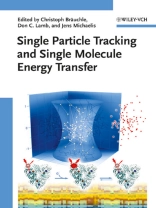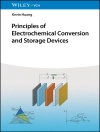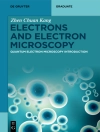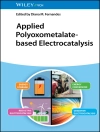Dieses interdisziplinär konzipierte Handbuch fasst alles zusammen, was man momentan über die Verfolgung von Einzelmolekülen mit SPT und Single Molecule Energy Transfer wissen muss. Exzellente Herausgeber und ein international renommiertes Autorenteam garantieren höchste fachliche Qualität der Beiträge.
Mục lục
Preface
PART I: Single-Particle Imaging and Tracking
THREE DIMENSIONAL PARTICLE TRACKING IN A LASER SCANNING FLUORESCENCE MICROSCOPE
Introduction
Image-Based Single-Particle Tracking Methods
Advanced Fluorescence Microscopy Techniques for Single-Particle Tracking
Two-Photon Excitation Microscopy
3-D Tracking in Image-Based SPT Approaches
3-D Tracking in Laser Scanning Microscopes
Instrumentation
Background Noise
Simultaneous Two-Particle Tracking
Application: Chromatin Dynamics in Interphase Cells
Conclusions
THE TRACKING OF INDIVIDUAL MOLECULES IN CELLS AND TISSUES
Introduction
Single-Molecule and Single-Particle Localization
Positional Accuracy
Tracking
Trajectory Analysis
Applications
Conclusions
MESSENGER RNA TRAFFICKING IN LIVING CELLS
Intranuclear Structure and Dynamics
FCS and FRAP Studies of Nuclear m RNP Mobility
Single-Particle Tracking of m RNA Molecules
Single-Particle Tracking of Specific, Native m RNPs
In Vivo Labeling of Native BR2 m RNPs
Outlook: Light Sheet-Based Single-Molecule Microscopy
QUANTUM DOTS: INORGANIC FLUORESCENT PROBES FOR SINGLE-MOLECULE TRACKING EXPERIMENTS IN LIVE CELLS
Introduction
Fluorescent Labels for Single-Molecule Tracking in Cells
Optical Properties of Colloidal Quantum Dots
Synthesis of Colloidal Fluorescent Quantum Dots
Surface Chemistry for the Water-Solubilization of Quantum Dots
Interfacing Quantum Dots with Biology
Single Quantum Dot Tracking Experiments in Live Cells
Conclusions and Perspectives
PART II: Energy Transfer on the Nanoscale
SINGLE-PAIR FRET: AN OVERVIEW WITH RECENT APPLICATIONS AND FUTURE PERSPECTIVES
Introduction
Principles of FRET
sp FRET in Solution
sp FRET on Immobilized Molecules
Future Prospects
ALTERNATING-LASER EXCITATION AND PULSED-INTERLEAVED EXCITATION OF SINGLE MOLECULES
Introduction
ALEX: The Principles of Operation
My ALEX
Nanosecond-ALEX/Pulsed Interleaved Excitation (PIE)
ms ALEX
Three-Color ALEX
Conclusions and Outlook
UNRAVELING THE DYNAMICS BRDIGING PROTEIN STRUCTURE AND FUNCTION ONE MOLECULE AT A TIME
Introduction
Converting Chemical Energy to Mechanical Work: Molecular Motors
Allostery in Proteins
Enzyme Catalysis
Conclusions
QUANTITATIVE DISTANCE AND POSITION MEASUREMENT USING SINGLE-MOLECULE FRET
Introduction
Fundamentals of FRET
FRET as a Spectroscopic Ruler: Initial Experiments and Limitations
Measuring the Quantum Yield
The Orientation of Donor and Acceptor Molecules
Accurate FRET Measurements Using Fluorescence Correlation Spectroscopy
FRET-Based Triangulation and the Nanopositioning System
Conclusions and Outlook
PART III: Single Molecules in Nanosystems
COHERENT AND INCOHERENT COUPLING BETWEEN A SINGLE DIPOLAR EMITTER AND ITS NANOENVIRONMENT
Introduction
Systems
Coupling of Two Oscillating Dipoles
A Dipole Close to a Surface
A Single Molecule and a Single Nanoparticle
Modification of the Spontaneous Emission and Quantum Efficiency by Nanoantennae
Conclusions
ENERGY TRANSFER IN SINGLE CONJUGATED POLYMER CHAINS
Introduction
Why Single Chain Spectroscopy?
Experimental Approach and Material Systems
Photophysics of Single Conjugated Polymer Chains
Energy Transfer in Single Chains
Influence of Initial Excitation Energy on Energy Transfer
Conclusions
REACTIONS AT THE SINGLE-MOLECULE LEVEL
Introduction
Biocatalysis at the Single-Molecule Level
Chemocatalysis at the Single-Molecule Level
VISUALIZING SINGLE-MOLECULE DIFFUSION IN NANOCHANNEL SYSTEMS
Introduction
Correlation of Structural and Dynamic Properties Using TEM and SMT
Phase Mixture
Heterogeneous Dynamics of a Single Molecule
Oriented Single Molecules with Switchable Mobility in Long Unidimensional Nanochannels
High Localization Accuracy of Single Molecules Down to the Single Channel Limit
Probing Chemical Interactions in Silica Thin Films Using Fluorescence Correlation Spectroscopy (FCS)
Functionalized Mesoporous Silica Structures
Single-Molecule Studies of Mesoporous Silica Structures for Drug-Delivery Applications
Conclusions and Outlook
Giới thiệu về tác giả
Christoph Bräuchle is Professor at the Ludwig-Maximilian-University (LMU) Munich. After his Ph D, he spent one year as a postdoc at IBM in San José, California, USA. His research focuses on imaging, spectroscopy and manipulation of single molecules in bio- and nano-sciences. Besides numerous publications in international journals, Prof. Bräuchle has won several honors, including the prestigious Philip Morris Research award and the Karl Heinz Beckurts Prize 2002. He also is a member of the Academia Europaea.
Don C. Lamb is Professor for Biophysical Chemistry at the LMU Munich.
He received his Ph D from the University of Illinois at Urbana-Champaign and was a research fellow at the Harvard Medical School, an Alexander von Humboldt Research Fellow at the TU Munich, a member of the Laboratory for Fluorescence Dynamics at the University of Illinois at Urbana-Champaign and a visiting scientist at the University of Ulm. His research centers around ultra-sensitive fluorescence methods, single molecule studies, protein function and dynamics, fluorescence fluctuation spectroscopies, live-cell imaging, single particle tracking and single virus tracing.
Jens Michaelis is an Assistant Professor at the LMU Munich. After receiving his Ph D in physics in 2000, he spent several years as a postdoc at the University of California, Berkley, focusing on single-molecule studies of molecular motors. His research interests are the molecular mechanisms underlying the biological activity of proteins and mechanical properties of polymer molecules. In 2007 he was awarded the Römer Prize from the LMU for his habilitation work.












